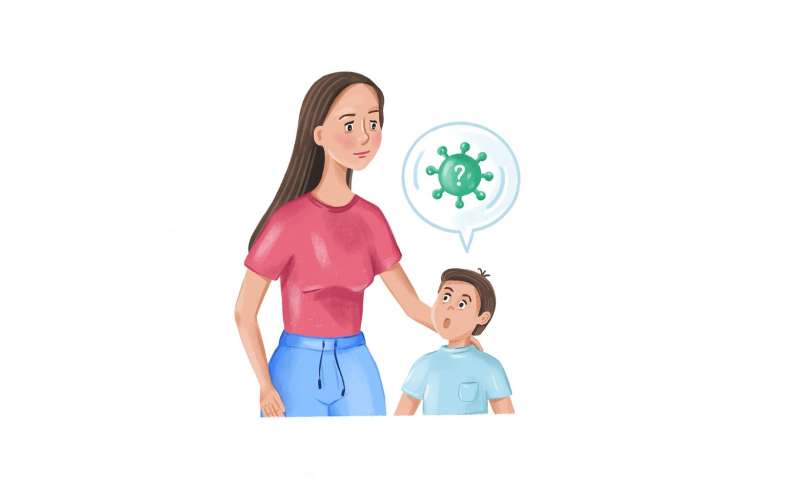
Children and young people are around 40% percent less likely to be infected than adults when exposed to someone with the virus, finds a new study of global COVID-19 transmission data, co-led by UCL researchers.
In this study, published in JAMA Pediatrics, the researchers have updated their previous systematic review and meta-analysis, published as a preprint in May, to encompass more than 13,900 studies, to understand how likely it is that children catch COVID-19 (known as susceptibility) and whether they pass it on to others (known as transmission or infectiousness).
Lead author Professor Russell Viner (UCL Great Ormond Street Institute of Child Health) said: “We have now assessed twice as many COVID-19 contact-tracing and population screening studies, providing more robust data and conclusions.
“Our findings show children under 12 to 14 years appear significantly less likely to contract COVID-19 from infected others.
“Data for teenagers are less clear and we must therefore assume they are as susceptible as adults. Susceptibility is a key part of the chain of infection, and our findings support the view that children are likely to play a smaller role in transmitting the virus and proliferating the pandemic, although considerable uncertainty remains.
“This new data provides further essential evidence to governments around the world to inform their decision-making on keeping schools open during the pandemic.”
The researchers screened 13,962 studies, published on MedRxiv and PubMed, which allowed them to identify 32 studies from 21 countries with useful data.
In total the studies included 41,640 children and young people (defined as under 20) and 268,945 adults: 18 studies were contact-tracing studies, which included three based in schools, and 14 were population-screening studies. The analysis showed that children and young people (aged under 12-14) had 44% lower odds of catching SARS-CoV-2, the virus that causes COVID-19, from an infected person, compared with adults (aged over 20).
Researchers concluded that their findings imply that children are likely to play a lesser role in transmission of SARS-CoV-2 at a population level because fewer children are likely to be infected in the first place.
However, the study provides no information on the infectivity of children, i.e. the level at which children can transmit the virus once infected.
Professor Viner added: “Our study suggests that children—and groups of children in schools—play only a limited role in the spread of this infection but at this stage the evidence is weak. More research on the role of children in transmission is urgently needed.”
While the study did not focus on the impact of transmission rates in school settings, Professor Viner commented: “The role of children in transmission of SARS-CoV-2 remains unclear; however, existing evidence points to educational settings playing only a limited role in transmission when mitigation measures are in place, in marked contrast to other respiratory viruses.
Source: Read Full Article
